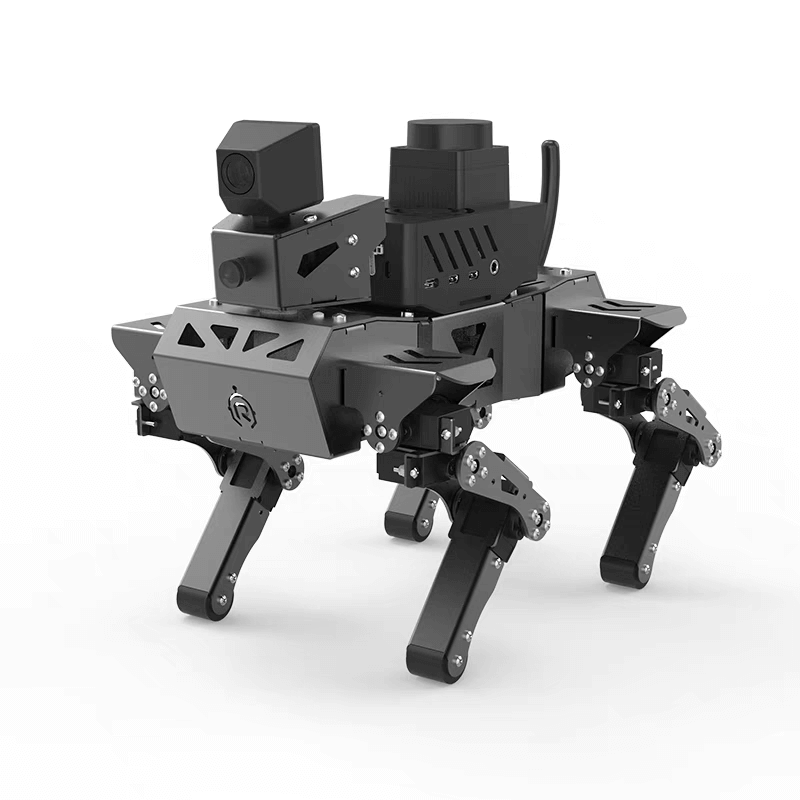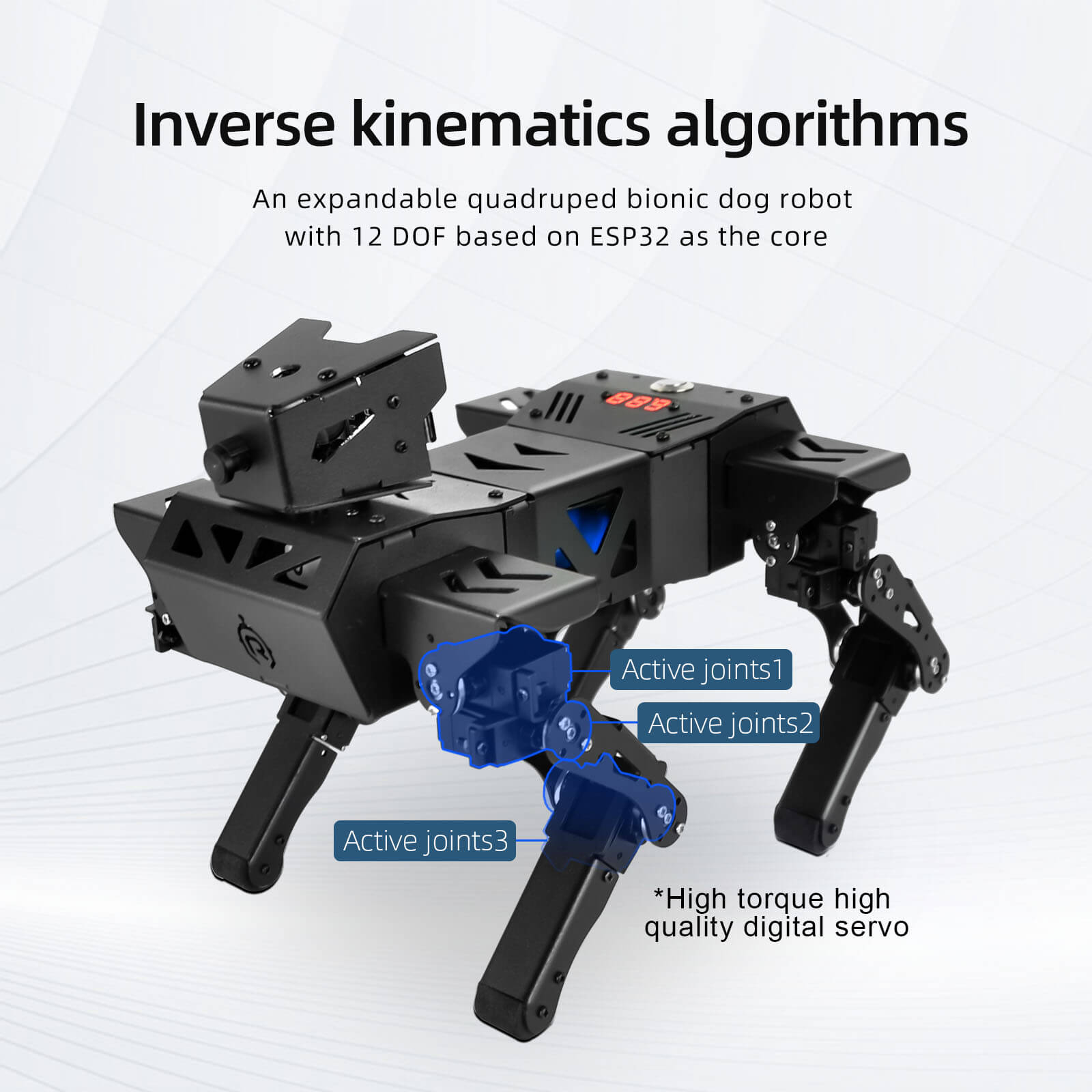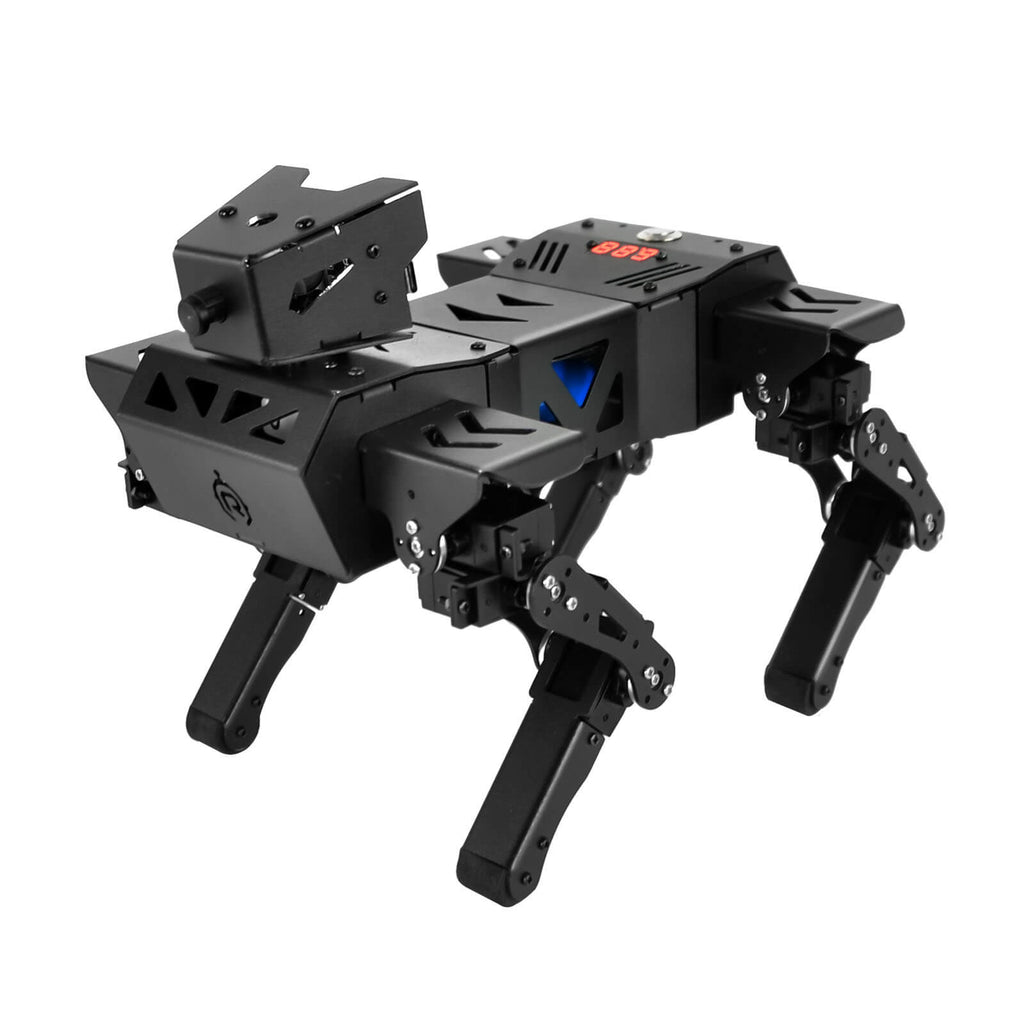The basic version of the robot dog has basic fun actions and customizable sitting, posture and angle control, as well as wifi real-time video and Android mobile APP control, such as walking, steering, and executing simple commands. This type of robot dog is usually used for display, entertainment or primary education applications. It is easy to operate and suitable for users without programming background.

The graphical programming version of the robot dog introduces the concept of graphical programming on the basis of the ordinary version. Users can set the behavior and actions of the robot dog through the graphical interface. This method lowers the threshold for programming, allowing users to program and customize robot dogs without having complex programming knowledge. At the same time, in terms of function expansion, more programming has been added, such as infrared sensors and ultrasonic sensors. This version of the robot dog is more suitable for education, scientific research and simple automation applications. For example, the robot dog can be programmed to complete specific tasks or path planning, and is more suitable for primary programming teaching.

The AI intelligent version of the robot dog integrates more advanced artificial intelligence technologies on the basic version, such as voice control, color recognition, QR code recognition, color recognition, etc. Moreover, the robot dog has a built-in ROS Melodic system, which means that ROS applications can be written directly, and can be used with cameras and lidar to realize SLAM mapping and navigation functions by driving lidar and other equipment. This gives the robot dog more powerful autonomous decision-making and learning capabilities, which can make adaptive adjustments according to the environment and even interact with humans in natural language. The AI intelligent version of the robot dog can be used in more complex scenarios, such as home services, medical care, safety inspections, etc. They can complete more tasks autonomously, such as identifying family members, conducting simple conversations, autonomous navigation, etc.

Generally speaking, the ordinary version of the robot dog has relatively basic functions and is suitable for simple applications and primary education. The graphical programming version of the robot dog provides users with greater customization space through the graphical programming interface. It is suitable for education and scientific research applications; while the AI intelligent version of the robot dog achieves more advanced functions and a wider range of application scenarios by integrating artificial intelligence technology.


